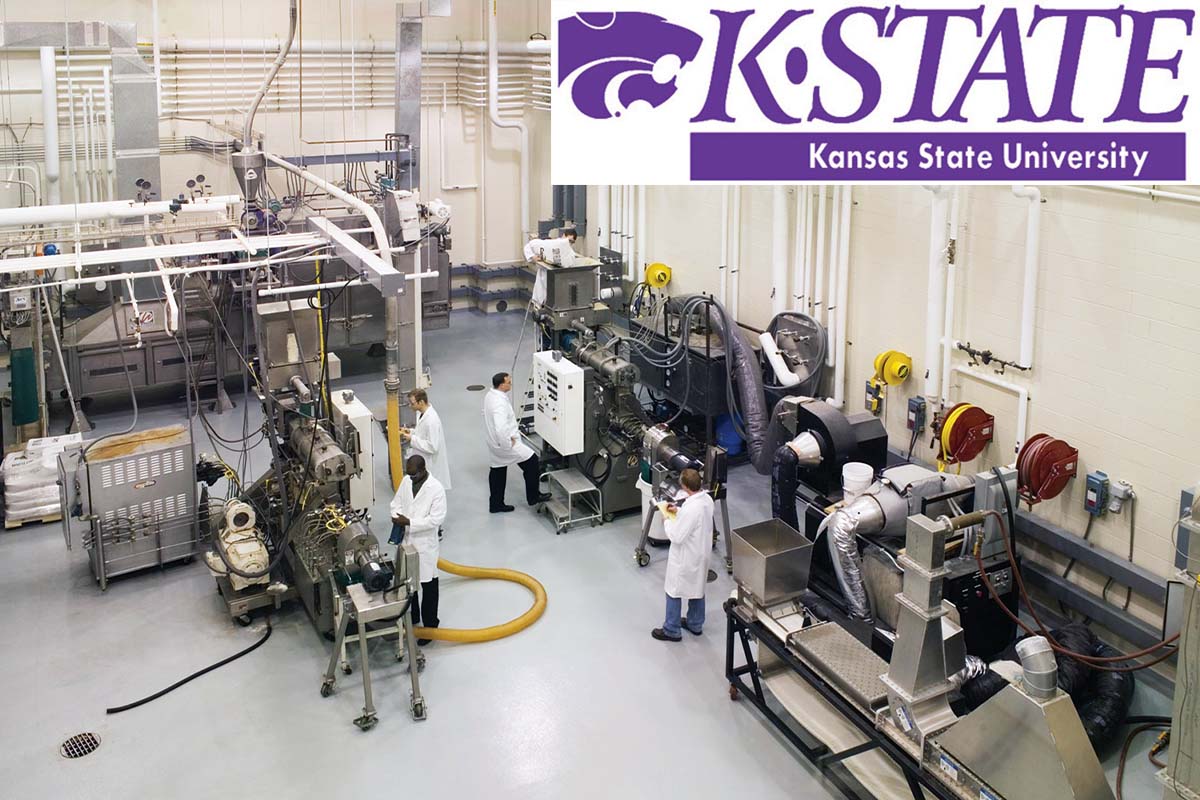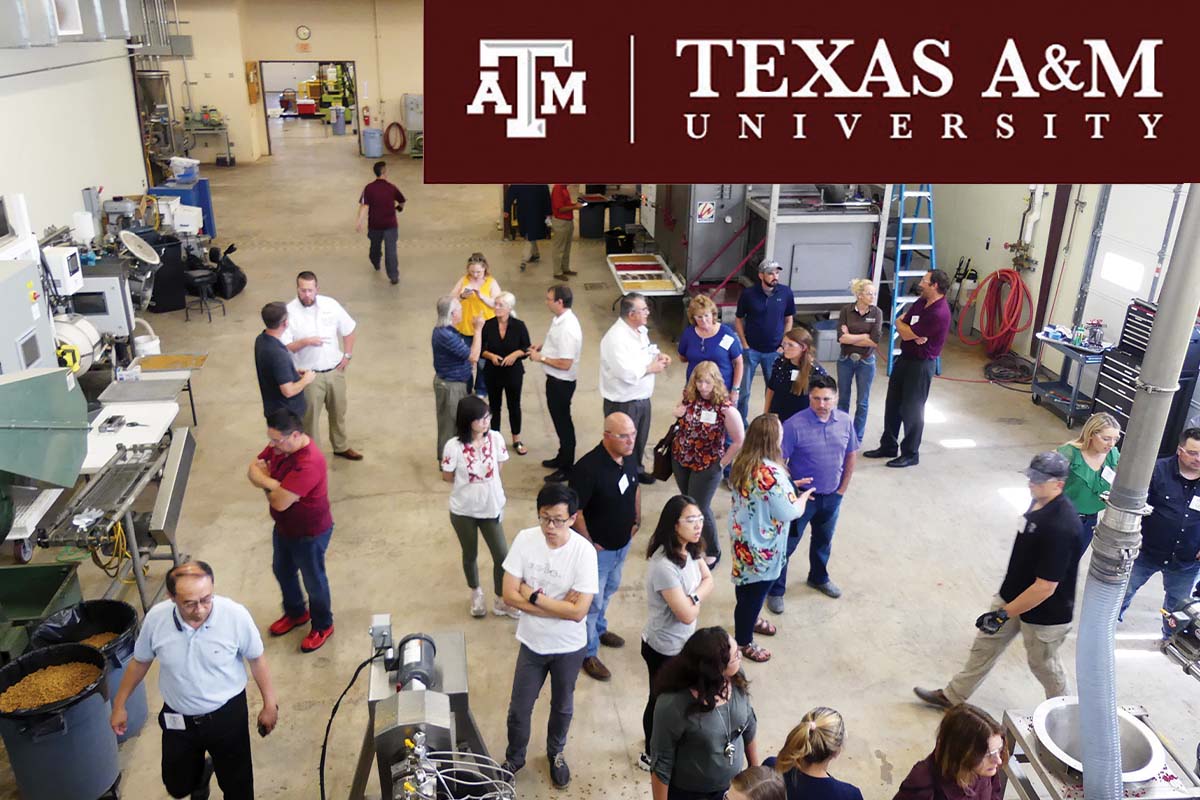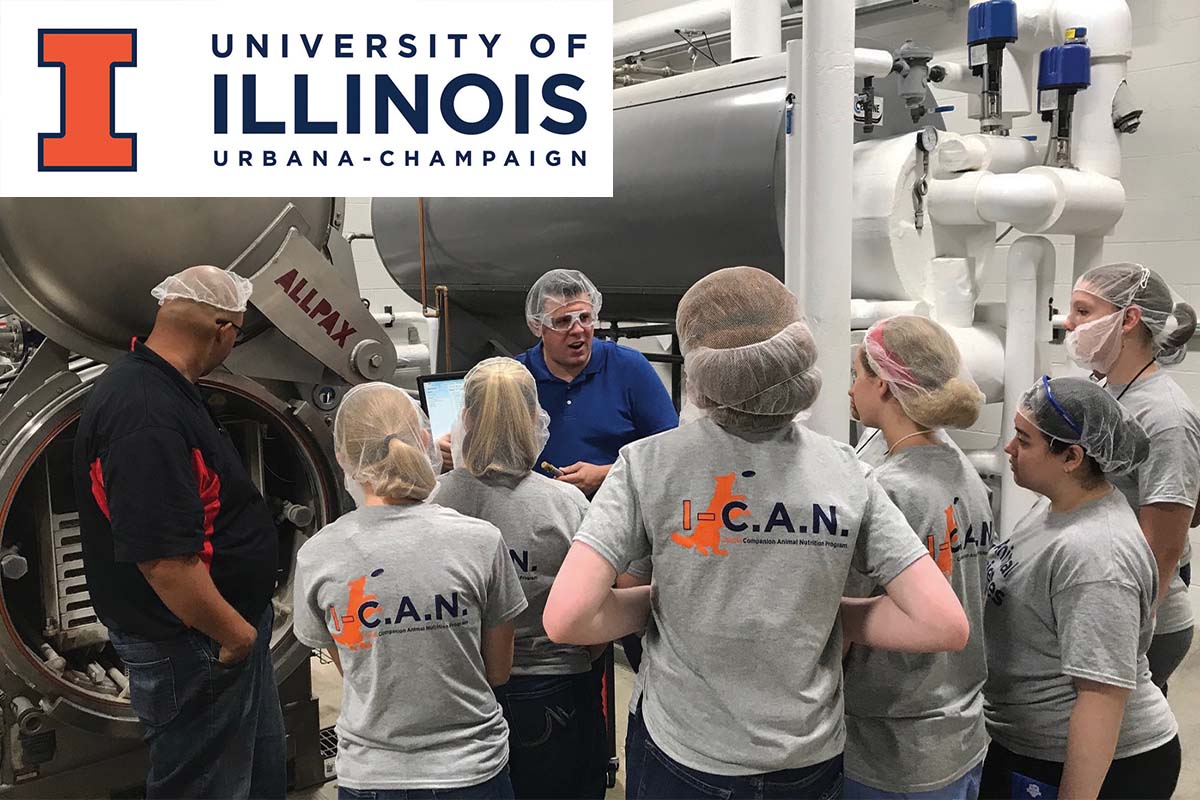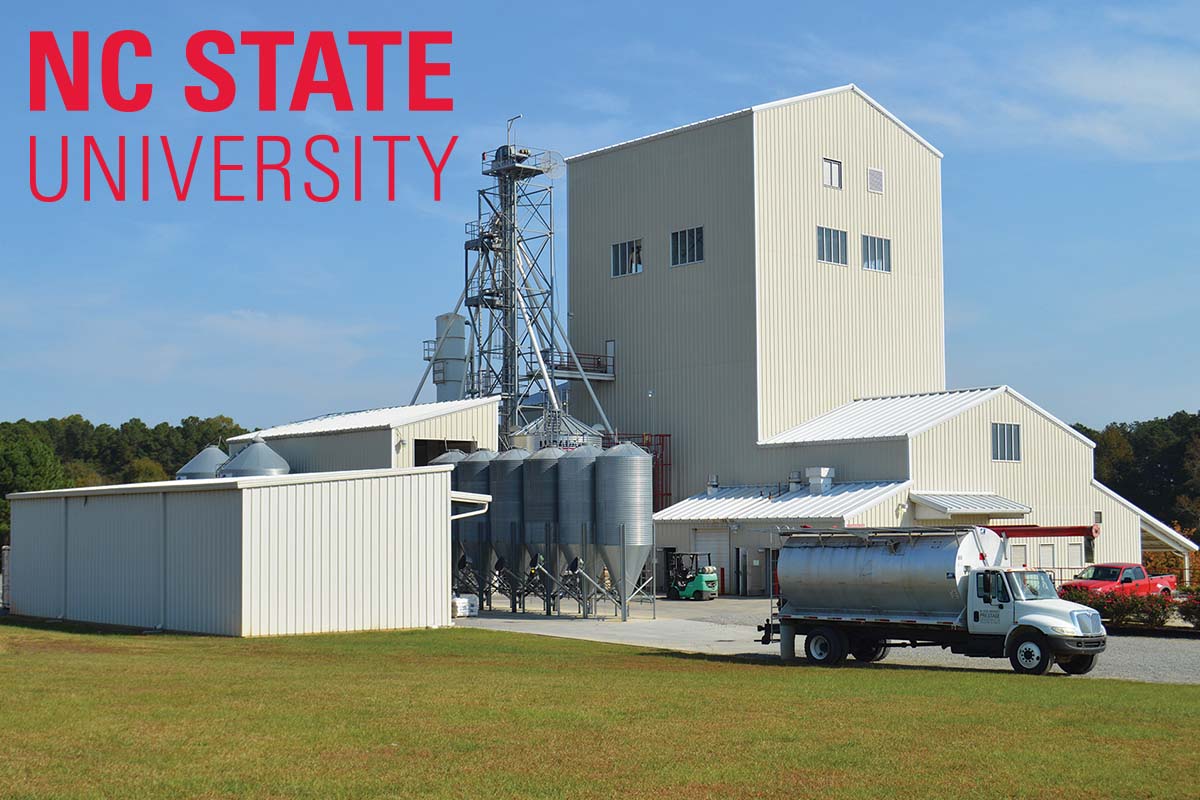This series of articles was published in Pet Food Processing’s 2021 Resource Guide. Read it and other articles from this issue in our Resource Guide digital edition.
What do Kansas State University, Texas A&M, the University of Guelph, the University of Illinois at Urbana-Champaign, and North Carolina State University all have in common? Key partnerships with the US pet food manufacturing industry.
These academic partners each offer unique focuses and capabilities in the pet nutrition space. For students aspiring to join the industry after graduation, professionals wishing to continue education, and companies relying on key research to develop innovative products, these five universities are invaluable partners and resources.
As a leader in food, nutrition and agriculture education, Kansas State University plays a significant role in educating the pet food industry through its research into pet nutrition and extrusion.
The university’s pet nutrition program is led by Dr. Greg Aldrich and focuses on the nutritional impact of pet food processing. Specifically, he looks at the impact thermal and mechanical processes have on food safety, nutrition and product shelf life. Additionally, he is working to develop a pet food science program for undergraduate and graduate training and is also working to develop new avenues of teaching and collaboration between the industry and university.
 Kansas State University offers industry the ability to conduct small scale product testing as well as pet nutrition testing. (Source: Kansas State University)
Kansas State University offers industry the ability to conduct small scale product testing as well as pet nutrition testing. (Source: Kansas State University)
Kansas State invests heavily into extrusion research, and these efforts are headed by Dr. Sajid Alavi. He works to supervise the extrusion center that can process up to 300 to 500 lbs per hour, and this facility allows the university to produce a wide variety of products using grains and fresh meat that can be made into food for all kinds of species. While the primary focus is on canine and feline food, the work has other applications as well. The university analyzes materials for their properties and has a sensory lab that conducts testing for taste and palatability. It also houses microbial testing capabilities.
Overall, the extrusion lab provides services to the industry for pilot-scale trial runs and helps meet needs for research and course-related runs. It includes a pilot-scale Wenger TX-52 twin screw extruder, a pilot scale Wenger X-20 single-screw extruder, and a Wenger Series 4800 gas-fired dryer. It also has a lab-scale American Leistritz Micro 18 twin screw extruder that enables them to conduct experiments on a small scale. Kansas State uses extrusion not only as a process for mixing and forming products but also as a way of sterilizing and cooking products to make them more digestible.
“The unique facets of K-State’s pet nutrition and extrusion research include the availability in one place of pilot-scale processing facilities and pet testing capabilities through kennels that are maintained on campus,” Alavi said. “In addition, the combination of pet nutrition and extrusion expertise and other scientists that specialize in areas such as physical testing, chemical analyses and microbiology, makes the university a ‘one-stop shop’ for industry when it comes to solving complex challenges.”
The university offers various short courses including a course on technology and commercialization in extrusion processing. It also offers various courses on demand to help meet specific industry needs.
While the university doesn’t have a unique degree in pet food processing, it does have an option in the grain science department for a degree in feed science and animal feed. It also offers masters and doctorate degree that emphasize pet food research.
The use of the extruder is essential in producing pet food, and educating the industry on its use is the focus of the work of Dr. Mian Riaz, director of the extrusion technology program at Texas A&M.
The university currently offers five short courses related to extrusion, and they include: Extruded Pet Food and Treats; Aquaculture Feed Extrusion, Nutrition & Feed Management; Food Extrusion: Cereals, Pulses, Proteins & Other Ingredients; Snack Food Processing; and Feeds and Pet Food Extrusion.
 Texas A&M short courses are designed to train production personnel on the principles of extruders and support systems. (Source: Texas A&M)
Texas A&M short courses are designed to train production personnel on the principles of extruders and support systems. (Source: Texas A&M) These extrusion courses train production personnel in principles and characteristics of extruders and support systems for effective selection and operation. Also covered is a review of current practices for preparation of pet food and treats and practical aspects of extrusion technology for pet food manufacturing. Participants also have the opportunity to obtain a certificate and professional development hours.
The courses have been taught virtually during the pandemic, and the plan going forward is to offer them in a hybrid manner to allow for attendees from other countries to join. In fact, this year’s pet food and treats course had more than 40 attendees from nine different countries. All the short courses last several days and offer hands-on elements.
Riaz said the university has offered its pet food course, which discusses the latest technology, innovation and safety of pet food, for the last 30 years. Participants can also engage in actual demonstrations with pet food via video during this course.
While the university does not currently offer a formal degree in pet food processing, its poultry science program teaches many aspects of feed processing, and many facets of nutrition are covered in the veterinary school. Additionally, the school offers undergraduate programs in food science and technology.
The university also works with many feed ingredient suppliers to perform feeding trials to see how its products perform. Overall, Riaz said Texas A&M can help the industry solve their problems by providing special training and consulting.
Although the university’s 30-year-old pilot plant was repurposed in 2019, Riaz is looking at how Texas A&M can develop a new facility in the future.
At the University of Guelph, Dr. Kate Shoveller, animal nutritionist at the Ontario Agricultural College, and Dr. Adronie Verbrugghe, veterinary nutritionist at the Ontario Veterinary College, collaborate on the application of research and innovation within the pet food and products market. They support research into companion animal nutrition management for healthy pets and clinical nutrition management for pets with diseases.
 The University of Guelph’s involvement with the pet food and treat industry centers around research into companion animal nutrition management for healthy pets and clinical nutrition management for pets with diseases. (Source: University of Guelph)
The University of Guelph’s involvement with the pet food and treat industry centers around research into companion animal nutrition management for healthy pets and clinical nutrition management for pets with diseases. (Source: University of Guelph)
Shoveller and Verbrugghe research fundamentals of pet nutrition including nutrient requirements and metabolic responses to diets as well as the effect of clinical nutrition and dietary supplements in the treatment of disease in dogs and cats. Other areas of research include the effects of environmental management such as frequency of feeding, light cycles, and temperature fluctuations on physiological responses. Overall, the team works with animal ethologists and behaviorists, consumer market experts, and veterinary specialists to conduct such research.
The university has an extrusion facility for human food, and it collaborates with other universities, such as the University of Alberta and University of Saskatchewan, that have product development expertise. It also works with industrial partners for product innovation. In these scenarios, the industrial partners donate the product as a contribution to the research.
Research conducted by the University of Guelph also explores digestibility, metabolism, body composition, energy and macronutrient metabolism, behavior and welfare, and food quality. The university collaborates with veterinary specialists including gastroenterologists, cardiologists, oncologists and renal experts. To conduct all this research, it has cats and dogs bred specifically for this purpose. Additionally, it uses sporting dogs through a relationship with a local sled dog kennel and sometimes uses client-owned dogs. Its patients are recruited through the Ontario Veterinary College’s Health Sciences Center Small Animal Hospital and through local veterinary specialty clinics.
An advanced animal nutrition course is available to all undergraduates who have met the prerequisites. Comparative nutrition is a graduate level course and covers all species, but is particularly focused on non-agricultural animal nutrition. Additionally, canine and feline clinical nutrition for prevention and treatment of disease is taught to all veterinary students. The university is also looking to add a pet food minor in the future. Currently, graduate students focusing on pet nutrition have options in a variety of programs including animal nutrition, food science, animal behavior, clinical studies, biomedical sciences and population medicine.
The university works closely with the industry in part due to federal and provincial matching programs that allow the industry to use federal funds to accelerate innovation with a team of academics.
University of Illinois at Urbana-Champaign
The companion animal biology and nutrition program at the University of Illinois at Urbana-Champaign was founded in 1974 and conducts research in multiple disciplines. These include evaluating novel, alternate, and sustainable ingredients as well as studying the impact of processing technology on the quality and safety of pet food products. It also investigates the use of therapeutic nutrition to support the health and wellbeing of pets.
“This program has been considered the hub of companion animal nutrition and a prized destination for many young scientists interested in companion animal biology and nutrition,” said Maria Regina Cattai de Godoy, associate professor in the department of animal sciences. “Many professionals currently working in the pet food industry, government, and leading academic programs in North America and around the globe have been trained and received advanced degrees from our program.”
 The university has the capability to perform detailed chemical analysis of ingredients, treats and pet food products, manufacture research diets, and assist companies with food processing at a pilot-scale. (Source: University of Illinois Urbana-Champaign)
The university has the capability to perform detailed chemical analysis of ingredients, treats and pet food products, manufacture research diets, and assist companies with food processing at a pilot-scale. (Source: University of Illinois Urbana-Champaign)
The university has the capability to perform detailed chemical analysis of ingredients, treats and pet food products, manufacture research diets, and assist companies with food processing at a pilot-scale. It also uses technology to conduct non-invasive in vivo studies that allow researchers to determine the nutritional adequacy of novel ingredients and pet food products as well as evaluate parameters related to animal health and disease.
The university has several facilities including a Feed Technology Center that can dry and store grains and ingredients, and conducts milling, mixing, and pelleting with an inline NIR system. This facility has an enclosed extrusion annex with storage and live bins for dry mix delivery, a differential diameter preconditioner, a single-screw extruder, two-pass oven dryers and coolers, and a batch coating system. The extrusion system is also fully automated, has pneumatic conveyance and the capability of adding fresh meat, fat and liquid ingredients.
The university’s food science and human nutrition pilot processing plant focuses on human and pet food technologies with baking and retort equipment. It has a 10,000-square-foot processing plant, product development kitchen and walk-in cold storage. It also has an Integrated Bioprocessing Research Laboratory with six laboratories equipped to perform proximate analysis as well as detailed chemical characterization of the macronutrient profile of ingredients, diets and samples.
The university has an online companion animal nutrition certificate program, and courses include training on canine and feline metabolism, nutrient functions and requirements, pet nutrition and disease, pet food ingredients, principles of diet formulation, pet food processing technologies, good manufacturing practices, pet food regulations and market trends. It hopes to develop a series of workshops and hands-on trainings in the future. Expanding undergraduate and graduate curriculum in ingredient handling and processing, pet food formulation and food safety is also in the works. Additionally, the university offers a non-thesis master’s program that can be completed online.
North Carolina State University
While much of the animal food research at North Carolina State University focuses on livestock and poultry, the feed mill participates in ingredient approval trials for livestock and poultry that can be used as a stepping-stone for pet food ingredient approval processes.
The university’s animal food programs have expanded in recent years and now include both a food safety and an extrusion and value-added specialist so the programs can grow to serve the pet food market in the future. The feed mill was designed for precision manufacturing and has the capability to collect data throughout the manufacturing process.
The university also has the capacity to test new food appropriateness on campus with companion animals and uses various contract facilities for longer-term feed growth trials.
In the university’s quality assurance laboratory, researchers have the capability to test ingredients and products for moisture, protein content, mycotoxin contamination, pellet durability and particle size.
 Working across multiple species, the university provides training and research relevant to animal food industries. (Source: North Carolina State University)
Working across multiple species, the university provides training and research relevant to animal food industries. (Source: North Carolina State University)
Its extrusion lab recently obtained a Differential Scanning Calorimeter and Rapid Visco Analyzer to analyze the starch content of raw ingredients and the finished products. The facility has various sampling points throughout its processes to measure product stability, mixer uniformity after mixing, pelleting and cooling.
North Carolina State has nutrition graduate students who research the pet microbiome, breed differences in feeding behavior, and ingredient appropriateness.
The university offers a Preventive Controls for Animal Food training course for the industry on demand. Its Animal Food Safety Program has worked with several pet food and treat processors to help establish animal food safety systems and regulatory compliance.
The feed milling program offers some animal food manufacturing courses that give students the opportunity to earn an undergraduate minor or graduate certificate in feed milling. Students can take courses in comparative nutrition, animal nutrition or companion animal management to supplement a degree or program in feed milling. The extrusion course teaches pet food processing and gives students an understanding of the process. A certificate in nutrition in the animal science program complements several degrees, and the university offers companion animal undergraduate and graduate courses as well.
North Carolina State Feed Milling Extension works with processors to provide training and programming relevant to the animal food industries, and the extrusion program meets the needs of the aquaculture industry.
“North Carolina State’s animal food research and education is unique because of our ability to work with multiple species and stakeholders from diverse segments of the industry,” said Marissa Cohen, area specialized agent for animal food safety. “We’re especially proud of our ability to adapt to and address the needs of both our students and the industry as things evolve in terms of feeding practices, facility operations, and delivery of instruction and training.”
Read more about associations, agencies and partners of the pet food sector.




